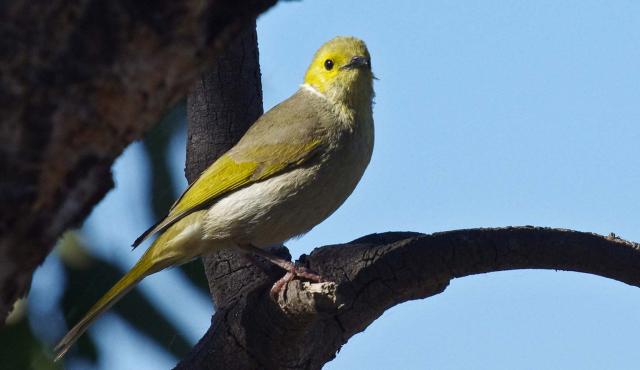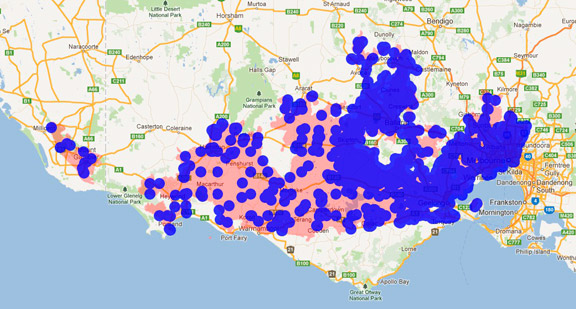A range of teacher professional learning programs will be developed to accompany the Biodiversity of the Western Volcanic Plains online outreach...



White-plumed Honeyeater
Lichenostomus penicillatus
A gregarious bird forming small flocks to forage. Breeds most months with sufficient rain, but usually August to December in the southern parts of Australia. Pairs of birds build cup-shaped nests hanging in foliage 1-9 m high. Clutch size is 2-3 eggs and they are incubated by the female. Two to three clutches can be produced in a year. Both sexes feed the young, often with the aid of other birds.
| Details | Description |
| Type | Bird |
| Group | Honeyeater |
| Identifying Characteristics | |
| Distinctive Markings | Distinctive white neck-plume. |
| Diet | Nectar, insects, lerps, honeydew, manna and fruit, some seeds. |
| Habitat | Woodland, mallee and inland rivers. Overall distribution linked to River Red Gums. Found in remnant bushland, parks and gardens in urban areas. |
| Native Status | Native to Australia |
| Sounds | Alarm call is a raucous, nasal "Cak - ak - ak - ak - ak - ark". Clear, sharp 'Whitch - a whee", "Whitch - a - whi"', "Whit - a - wheee"', "Whit - a - wheeet". |
| Taxonomy | |
| Phylum | Chordata |
| Class | Aves |
| Order | Psittaciformes |
| Family | Meliphagidae |
| Genus | Lichenostomus |
| Species | penicillatus |

Distribution maps indicate current and historic locations where species have been sighted.
Source: Atlas of Living Australia
| Conservation Status | |
| DEPI Advisory List | Not listed |
| FFG Act | Not listed |
| EPBC Act | Not listed |
The conservation status of species is listed within Victoria and Australia.
The Department of Environment and Primary Industry (DEPI) Advisory List consists of non-statutory advisory lists of rare or threatened flora and fauna within Victoria.
The Flora and Fauna Guarantee Act 1988 (FFG Act) lists threatened species in Victoria. Under the Act, an Action Statement is produced for each listed species.
The Environment Protection and Biodiversity Conservation Act 1999 (EPBC Act) is the Australian Government’s key piece of environmental legislation, listing nationally threatened native species and ecological communities.



